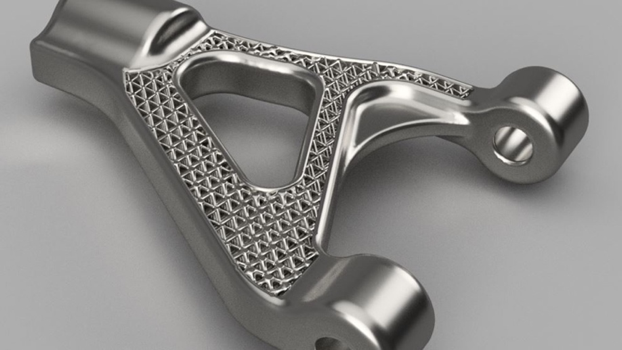
The 4th Industrial Revolution (4IR) is upon us, and it’s paving the way for an exciting future in design, engineering, and manufacturing – a ‘tomorrow’s world’ of interconnected computers, gadgets, services, robots, sensors and artificial intelligence (AI). This article focuses on the major innovations taking place in the field of design, and how software and systems like Autodesk manufacturing are pushing the boundaries of what is possible with cloud computing and AI.
Generative design – changing the face of manufacturing
One of the most innovative and potentially game-changing developments is generative design. It promises to change the face of everything around us and alter manufacturing standards for the better.
In a nutshell, generative design combines designer inputs and parameters with AI-driven algorithms and the power of cloud computing to create optimal designs. Generative-design software uses an iterative process to rapidly produce thousands of design options that are analyzed internally. The best solutions are presented to the designer. The designer then evaluates the options, modifies them if necessary and decides on the optimal design. Prototypes can then be 3D-printed and tested, and the design tweaked if problems arise.
Generative design creates a highly streamlined product development process. The speed at which the software can work when using the mass processing power of cloud computing is phenomenal. Modifications can be made and prototypes reprinted swiftly.
The main benefits of generative design are:
- Increased productivity and speed of design
- Frees up time for the designer to concentrate on other projects
- Creative design solutions that are often unusual or unique
- Cost of reworking designs is reduced or even eliminated
- Improved product performance and reliability resulting in greater customer satisfaction
- Environmentally friendly meaning less waste of energy and materials
The brave new world of generative design is leading to organically-inspired designs that look almost other-worldly or alien-like to human eyes. Often the appearance can be unusual and intriguing, but it will always improve the performance of the product. Generative design is ushering in an era of unlimited potential – no longer are designers constrained to the limits of their own imagination.
Advanced generative design processes, such as the type used in Autodesk manufacturing, are making things possible that would have been unimaginable only a few years ago.
Generative design applications
It’s no exaggeration to say that every aspect of life will be touched by generative design. From the coffee-maker you use to make your morning pick-me-up, to the frame of the bicycle you ride to work and the chair you sit on at your desk when you get there. It’s likely that in the not-too-distant future, all products will go through some form of generative design process.
It’s also likely that the products we use will have gone through some form of additive manufacturing process (3D-printing), especially during the prototype stage.
For example, some interesting brackets have been designed using generative design and additive manufacturing that have a cellular lattice-work interior, giving the bracket far more strength and a very unusual appearance.

Another interesting application of generative design is in ‘topology optimization,’ which involves changing the internal structure of a solid to make it lighter or more flexible. For example, a running shoe has been developed by Under Armour that has a 3D-printed sole with a honeycomb-style core, making it lightweight and flexible. It is ‘printed’ to match the exact running style of the athlete.

The opportunity to optimize both consumer products and engineering components is extraordinary and will revolutionize the world we live in.
In any industry, it makes sense for manufacturers to use processes that save time, cut costs and increase product performance. It also makes sense that they will want software that provides a complete package, linking generative design, additive manufacturing, and fabrication.
This is exactly what Autodesk manufacturing offers.
Autodesk manufacturing – catching dreams
Autodesk manufacturing refers to the suite of software packages that Autodesk has created and is developing that creates a seamless workflow from generative design to fabrication. Depending on the product requirements, there are different design platforms available.
Autodesk Generative Design (AGD)
AGD is described by Autodesk as the ‘next generation of CAD.’ It does everything we talked about earlier; creates thousands of iterations using cloud computing, analyses physical and mechanical properties, and prepares the design for 3D-printing.
AGD’s AI algorithms use clever systems such as shape synthesis, which analyzes data from various parameter inputs, including structural, mechanical, thermal and fluid properties. The software then runs thousands of iterations and presents the best solutions to the designer.
Final thoughts
All things considered, generative design is going to change manufacturing as much as robotics and automation have. The benefits are many and the downsides are few, initial set-up cost being the only one that springs to mind, and in any case, it will be quickly compensated by lower production costs.
Autodesk manufacturing is at the vanguard of this exciting new era, with their products likely to become industry standards. Companies that don’t adopt a generative design process and platform, such as Autodesk Generative Design are likely to be left behind, especially in ultra-competitive markets.
SOURCES:
https://www.autodesk.com/solutions/generative-design
https://www.autodesk.com/industry/manufacturing/resources/engineering-leadership/generative-design


